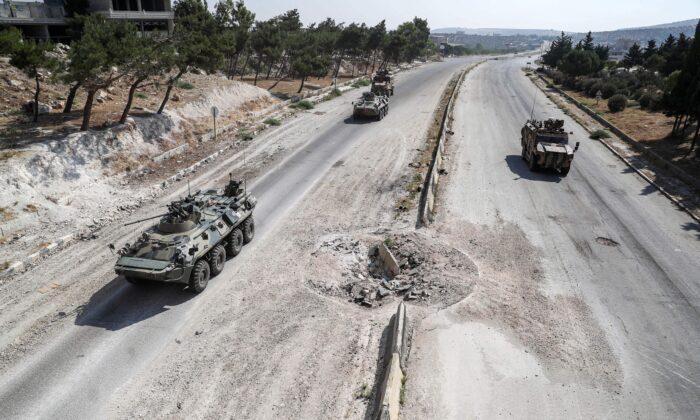President Joe Biden arrived in Poland by train following his surprise visit to Kyiv, Ukraine, days before the one-year anniversary of Russia’s invasion.
During his two-day visit in Warsaw, Biden is slated to meet Polish President Andrzej Duda, a key ally of Kyiv and an outspoken critic of Moscow’s ongoing “special military operation.”
On Monday, Biden surprised the world with his visit to Kyiv, which occurred under a tight veil of secrecy. Biden met with Ukrainian president Volodymyr Zelenskyy and walked along a street near the renowned St. Michael’s Golden-Domed Monastery.
Washington informed Russia about the president’s visit to Kyiv hours before his departure for “deconfliction purposes,” White House national security adviser Jake Sullivan told reporters. Only a handful of closest aides joined Biden in Kyiv, including Sullivan.
“This was a historic visit unprecedented in modern times to have the president of the United States visit the capital of the country at war where the United States military does not control the critical infrastructure,” Sullivan said.
Second Visit to Poland
Biden visited Poland last year, shortly after Russia’s initial invasion. During that visit, Biden denounced Russian President Vladimir Putin, who he said “cannot remain in power”–an assertion later walked back by the White House.In December, Biden hosted Ukrainian President Zelenskyy in Washington, where he reiterated his administration’s “unwavering” support for Ukraine’s war effort.
Since Biden took office in January of 2021, the United States has provided Ukraine with approximately $25 billion in security assistance.
Poland, too, has remained one of Kyiv’s staunchest supporters since the conflict began almost one year ago. It has already provided Ukraine with some 250 combat tanks and pledged dozens more last month, including advanced German-made Leopard tanks.
Biden’s visit to Warsaw is meant to rally Kyiv’s leading allies amid mounting popular disaffection with the protracted conflict, which has led to rising energy costs and depleted European arms inventories. Recent polling indicates waning support for the war in both Europe and the United States. In the latter, Republican lawmakers–who won control of the House of Representatives last year–have voiced mounting opposition to continued assistance.
While in Warsaw, Biden is also expected to meet leaders of the so-called Bucharest Nine (B9), a grouping of East European NATO allies established in 2015.
In addition to Poland, which joined the western alliance in 1999, the B9 consists of Bulgaria, the Czech Republic, Estonia, Hungary, Latvia, Lithuania, Romania, and Slovakia. Three of the nine members were part of the former Soviet Union–before its collapse in 1991–or the Soviet-led Warsaw Pact.
Over the last year, Russian forces have captured broad swathes of territory in the eastern, Russian-speaking Donbass region and along the country’s southern Black Sea coast.
After overseeing controversial referendums last October, Moscow announced the unilateral annexation of the Donetsk, Luhansk, Zaporizhzhia, and Kherson regions. Kyiv and its Western allies adamantly reject the legitimacy of the move. Ukrainian military officials, for their part, have repeatedly vowed to recover all lost territory by force of arms.
Moscow says its invasion and subsequent annexations were intended to protect Russian speakers in the Donbass region (comprised of Donetsk and Luhansk) from abuses by the Kyiv government. Kyiv, for its part, denies the claim, saying the moves by Russia constitute an illegal land grab.
Despite successful Ukrainian counter-offensives last fall, Russian forces have since regained the upper hand. Led by the Wagner Group, a Kremlin-directed paramilitary organization, they have captured several key positions in recent weeks, especially in the Donetsk region.
In the run-up to Biden’s Poland visit, speculation has mounted that the conflict’s upcoming anniversary could coincide with fresh Russian offensives along several parts of the 600-mile-long frontline.






